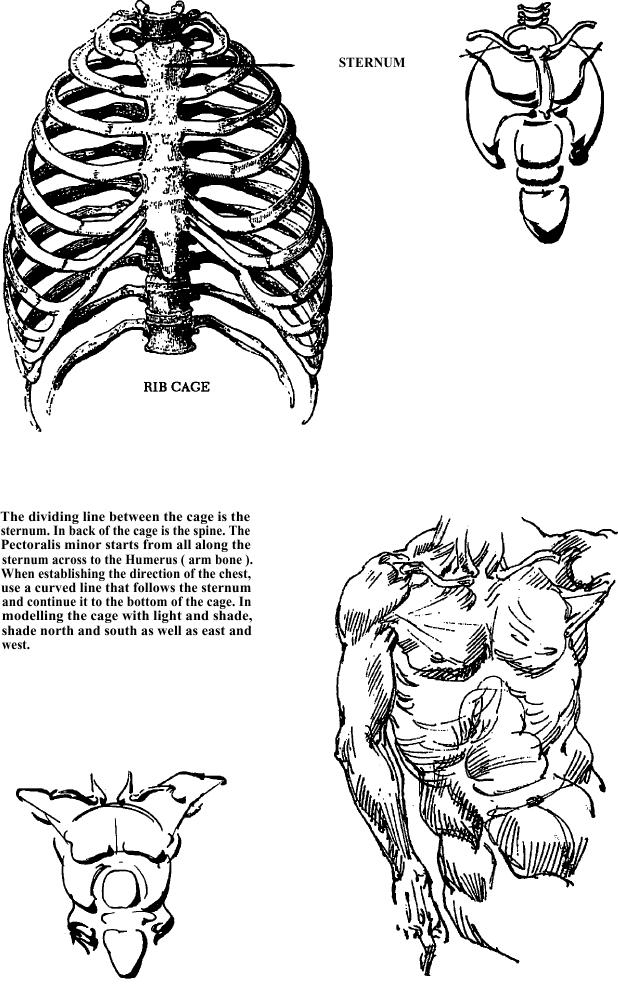Home > Directory Home > Drawing Lessons > How to Draw People > Drawing Human Chests / Torso > How to Drawing Human Chest / Torso
HOW TO DRAW PEOPLE'S CHESTS AND TORSO WITH FIGURE DRAWING LESSON
|
The largest unit in the human figure is the chest, often
called "the cage." It should be conceived of as being round.
The bony structure of the cage consists of twenty-four ribs,
twelve on each side. In the back they are attached to the
spinal column from the eighth cervicle down. In front, the
first seven are attached to the sternum and are referred
to as the true ribs. The next three are attached to each
other and are called the false ribs. The last two, attached
only to the spinal column, are called the floating ribs. The
ribs are flexible; they expand and contract with our
breathing.
On top of the cage in front there are two large muscles,
the Pectoralis minor and the Pectoralis major. The minor
is underneath the major, attached from the third, fourth
and fifth ribs to the clavicle. The Pectoralis major is attached
from the inner half of the clavicle all along the sternum as
far as the sixth and seventh ribs to the Humerus bone.
The stomach muscles, rectus abdominis, are attached
from the Pubic crest up to the fifth and seventh ribs.
The Serratus magnus muscles on the side of the cage
start from the upper eight ribs and are inserted into the
scapulas spinal edge ( the shoulder blade ).
The Deltoid, which is partly seen in front, is attached
to the outer end of the clavicle across the head of the humerus
( upper arm bone) and across to the ridge of the
scapular ( shoulder blade) and to the side of the humerus
about half way down. It draws the arm backward and
forward.





Here Are Even More Chest / Torso Drawing Lessons
Privacy Policy .... Contact Us




